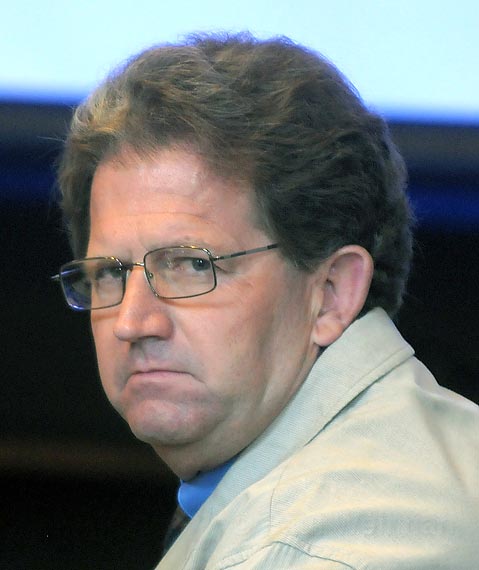Wife, Sister Testify in Lyons Trial
Millie and Corey Not Gettling Along at Time of Murders
Millie Lyons — the wife of accused double murderer Corey Lyons — concluded her testimony last Wednesday in the trial of her husband for the murder of his brother Daniel Lyons, and his brother’s life partner, Barbara Scharton. Corey is accused of killing the couple in a desperate attempt to avoid a civil lawsuit the two had filed against him over disputes arising from his construction of the couple’s home.
Millie’s testimony focused on the state of her relationship with her husband in the days leading up to the murders. According to her, she and Corey had been going through a period of significant marital tension. She recalled asking her husband not to get involved in the construction of his brother’s home, and when he did so despite her protests and was subsequently sued, she testified that she became extremely upset. The resulting animosity reportedly led to the couple sleeping in separate bedrooms, with Corey occasionally seeking refuge in the family’s motor home.

The fact that it was not unusual for Corey to sleep in his motor home is key to the defense’s contention that that is exactly what he was doing when police were unable to locate him in the hours just after the murders took place.
Millie was also asked by the defense if she believed it was possible that her husband’s truck had left their driveway without her knowledge on the night in question. “No way,” she said, “I would have heard it.” This runs counter to the prosecution’s assertion that Corey used his Ford pickup truck as transportation to and from the crime scene. While a number of witnesses reported seeing similar trucks in the area around the time the murders took place, they have stopped short of positively identifying Corey’s truck as the one that they saw.
The next witness called to the stand was Laurie Kaminski, the forensic scientist who carried out the gunshot residue analysis of samples taken from Corey and his belongings shortly after his arrest. Kaminski, an employee of Forensic Analytical Sciences Inc., testified that the samples she examined contained a number of “highly specific particles” consistent with those found in gunshot residue. She went on to explain that while her testing cannot say with absolute certainty whether the particles are, in fact, those found in gunshot residue — as similar particles can be found in dust from certain brake pads and from the manufacture of a small number of other commercial products — she said it was highly unlikely that the samples taken from Corey were the result of anything other than direct exposure to particles resulting from the discharge of a firearm.
When defense attorney Robert Sanger was given an opportunity to cross-examine Kaminski on Thursday, he made sure to emphasize the shortcomings inherent to such analyses. Sanger repeatedly referred to academic studies that reportedly show that gunshot residue is regularly found in significant quantities on police equipment, and in the back of police patrol cars, presumably like the one Corey was placed in after his arrest. He noted that the police made no attempt to bag Corey’s hands, a step that he contends would have been necessary to prevent cross-contamination. Sanger also speculated that a number of “gunpowder actuated” construction tools that Corey owned could have been another source of the particles.
The last witness called to the stand during Thursday’s proceedings was the defendant’s sister, Colleen Lyons-Zitelli. Her testimony centered on a phone call that she received from Corey at around 3:28 a.m. on the morning of the murders, roughly two hours after shots were reported to police, in which she said Corey sounded “distressed” and “quiet.” The subject of the call, she said, spanned a number of personal issues, from his relationship with his wife and children, to where he had been sleeping, but reportedly never touched on anything related to the death of their brother.
It quickly became clear from the prosecution’s line of questioning however, that they considered her account of the phone call, and her stated motivation behind the actions that followed, to be questionable considering what she says she knew at the time. Phone records indicate that at around 6:33 a.m., Colleen began placing a flurry of phone calls to other family members, and then proceeded to drive an hour and a half to her mother’s home in Sacramento. She cited concern for Corey’s welfare as the basis for her actions, and maintains that it wasn’t until around 9:30 a.m. that she learned of Dan and Barbara’s deaths.
The timing of the call between Corey and Colleen, and whether or not the death of Dan Lyons and Barbara Scharton was discussed, is significant because the fate of the victims was not discovered until a SWAT team forced its way inside their home roughly three hours after the call took place. If it were proven that Corey knew of Dan and Barbara’s deaths before police did, the defense would presumably have a far more difficult time convincing the jury that there exists a reasonable doubt that he was responsible for the murders.
Lyons-Zitelli will return to the witness stand on Monday, when the trial is set to continue after a three-day break.



